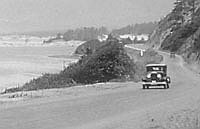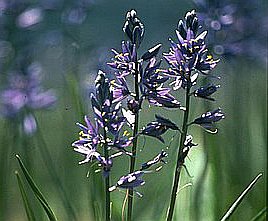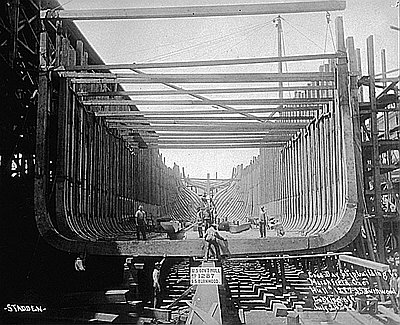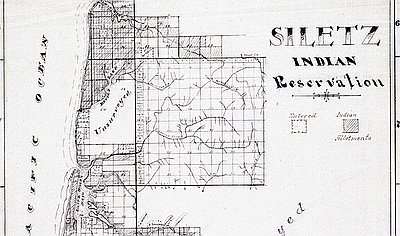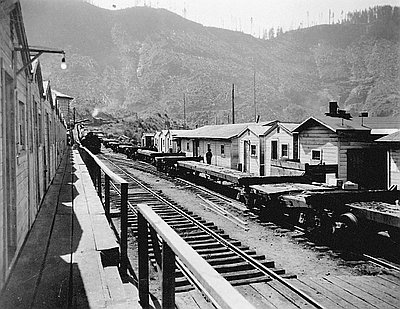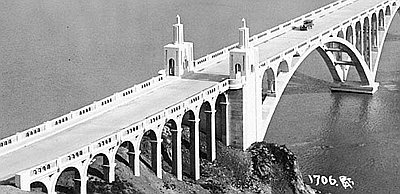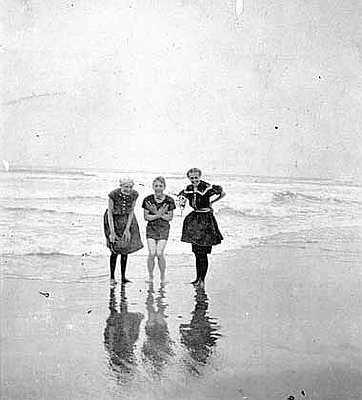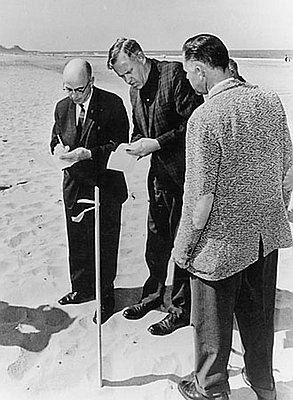Facing the Future
Despite the tribulations of natural resource industries since the 1980s, they are still vital to Oregon’s economy. On a whole, however, the state has shifted from an economy based on natural resources to one that relies increasingly on manufacturing and marketing. The Great Recession of the 2000s significantly affected the timber industry, with 30 percent of logging and mining jobs lost across Oregon.
Agriculture also continues to be important on the coast. Dairying remains a major industry around Tillamook Bay, where cheese and other dairy products are manufactured and shipped around the world. Tillamook County has more than 150 dairy farms and about 25,000 cows—more cows than people, residents like to brag. Nursery stock, cranberries, and Easter lily bulbs are important products of Curry County. About 95 percent of the bulbs grown for the potted Easter lily market reportedly come from the narrow coastal bench stretching from Brookings south to Smith River, California.
Commercial fishing remains important, even though the perilous status of some Pacific Coast salmon stocks severely curtailed salmon fishing, both commercial and sport. In 1999, commercial fishers harvested 250 million pounds of fish and shellfish in Oregon, worth $68 million. Groundfish, Dungeness crab, pink shrimp, and salmon made up the bulk of the harvest. Astoria, Newport, and Charleston remain important U.S. fishing ports; in 1998, Newport ranked eleventh and Astoria fifteenth among U.S. ports in landings of seafood species.
A bust followed the high-tech economic boom of the 1990s, and Oregon was slow to climb out of the recession that followed. The Great Recession brought additional economic challenges to the state. As of 2013, Oregon has a 6.9 percent unemployment rate, the tenth highest in the country.
Portland and the Willamette Valley corridor, with a more diversified economy, weathered the hard times better than more remote places— towns east of the Cascades and along the Oregon Coast. Coastal communities experienced firsthand the transformation of an industry and a way of life. The lingering distress of those changes is evident in higher-than-average rates of drug and alcohol abuse and family problems.
As the lumber industry’s importance waned in relative importance, tourism grew to become a coastal economic mainstay. Across Oregon, tourism is a $9.6 billion industry. In 2013, it accounted for $466 million in earnings and 20,000 jobs along the Oregon Coast—$195 million, 7,400 jobs on the north coast; $168 million, 7,800 jobs on the central coast; and $103 million, 4,700 jobs on the south coast. Though the Great Recession negatively affected tourism along the coast, revenue has increased steadily since 2011. Some coastal towns have experienced a development boom as wealthy retirees moved in to build first or second homes or buy into luxury condominium developments.
The tourism industry has its critics. It has environmental impacts, including crowded beaches, vandalized campgrounds, litter, traffic, and unsightly roadside attractions. Governor Tom McCall, whose had a distaste for unbridled development, once called Lincoln City “a model of strip city grotesque,” to the dismay of the city’s boosters. A flood of tourists and part-time residents can more than double the population of a coastal town on a summer weekend, placing stress on roads, campgrounds, and drinking water supplies.
Although tourism creates opportunities, it also generates mostly low-wage, part-time, unskilled jobs. The industry depends on an economy of surplus somewhere else, in which people have leisure time and money, and so it is as vulnerable to boom-and-bust cycles as the timber industry was. On a less tangible level, tourism forces year-round residents of the coast to be touts and hawkers of their own homeland, panderers to strangers. For some proud coastal Oregonians, this sticks in the throat.
Nevertheless, after a century and a half of rapid settlement, industry, and commerce, the Oregon Coast retains its beauty. Most coastal communities see the marketing of their scenery and recreational assets as, if not the main course of their economic future, then an important side dish, and one for which the rest of the world seems to have a large appetite. The Oregon Coast Visitors Association, a cooperative effort of the seven coastal counties, exhorts the rest of the world to explore “the People’s Coast.” It vigorously publicizes the region’s natural attractions—unspoiled beaches, rugged mountains, secluded woodland trails, spectacular sunsets, spouting whales, crying gulls—trying particularly to attract mid-week and off-season visitors. In 2014, Travel Oregon launched a new marketing campaign, promoting the “Seven Wonders of Oregon.” Second on the list was the Oregon Coast.
It is unclear whether the dream of plentiful tourism will create a stable prosperity. But the coast has never been a stable place—geologically, ecologically, socially, or economically. Like the restless sea that shapes it, everything on the Oregon Coast is in constant motion. Its residents have left one way of life behind, and it is not certain, in the twenty-first century, what their next one will look like.
© Gail Wells, 2006. Updated and revised by OHP staff, 2014.
